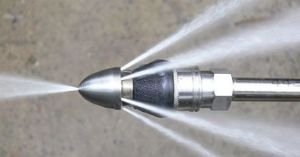Motorcycle accidents can cause injuries that can be costly. These expenses include medical bills, lost wages, and future treatment.
Duluth Motorcycle Accident Lawyer knows how to negotiate with insurance companies and take claims to court if necessary. They also have a keen eye for insurers’ tactics to reduce payouts on personal injury claims.

Choosing the right lawyer can help you get maximum compensation for your losses. Look for a firm with experience handling similar cases and a reputation for winning.
Identifying the At-Fault Party
In a motorcycle accident, the at-fault party is usually another passenger vehicle driver. However, determining who is responsible depends on the circumstances of your crash. Multiple parties may sometimes be liable for your injuries and damages. In these cases, a multi-party lawsuit is often the best strategy.
A motorcycle accident lawyer can help you identify all possible liable parties and work to recover compensation from them. Your lawyer will evaluate the crash scene and gather evidence, including police reports and eyewitness accounts. They will also interview any eyewitnesses that can provide insight into what happened and who was at fault.
Motorcyclists often experience severe and debilitating injuries from crashes, especially those who are thrown off their bike. Some of these injuries are fatal, and many can cause life-altering physical and psychological suffering. Some of the most common types of injuries include broken bones, road rash, brain trauma, spinal cord damage, and paraplegia or quadrapalegia.
Injuries from motorcycle accidents can also be costly for victims due to lost wages and the inability to live their normal lives. This is why it is important to seek medical attention as soon as possible after a motorcycle accident. Your NYC, Long Island, and Bronx motorcycle accident lawyer will ensure that you get the medical care you need to treat your injuries and determine how much your crash has affected your quality of life.
Your motorcycle injury attorney can also help you pursue the maximum amount of monetary damages for your losses. Monetary damages cover out-of-pocket costs such as medical bills and property damage, but they can also include emotional distress and pain and suffering. In some cases, your NYC, Long Island, and Bronx bike crash lawyer may be able to recover noneconomic damages such as loss of consortium or disfigurement.
During the insurance claim process, your lawyer will negotiate with the at-fault party’s insurer on your behalf. They have experience with these types of cases and understand the tactics insurance companies use to avoid paying claims. They will not be intimidated by these strategies and fight for you to receive full and fair compensation.
Collecting Evidence
When you’re involved in a motorcycle accident, evidence is a crucial component of a successful claim. Your attorney will help you gather and compile all pertinent information to build a strong case that proves your claim for damages. This includes evidence collected at the scene of the accident and any other physical or documentary support for your claim. Documentation is especially important for cases involving serious injuries. In addition, it’s imperative to keep receipts for any expenses you incur as a result of your injuries. This may include medical bills, lost wages, property damage, or other relevant costs.
At the scene, your lawyer will photograph any visible injuries or vehicle damage from different angles and locations to provide a comprehensive understanding of the accident. They will also examine the road surface to identify any physical conditions that may have contributed to the accident. This may include skid marks, weather factors, or pavement conditions. An expert analysis by accident reconstruction specialists or medical professionals can provide additional insight into the incident.
Another crucial piece of evidence is witness testimony. This can include first responders or eyewitness accounts that provide a neutral third-party perspective of the accident. Moreover, an experienced attorney will leverage case law and legal precedents to strengthen your case.
It’s important to contact witnesses as soon as possible to gather their statements. The more statements you have from witnesses, the more evidence your attorney will have to prove liability. Additionally, witness statements can help bolster your claim by providing details of the accident that may not have been obvious from the physical evidence alone.
Your attorney will also gather medical documentation to prove your injuries and the associated losses you have suffered. They will take care to ensure your claims are filed at the opportune moment, usually when you have reached the pinnacle of your recovery or maximum medical improvement (MMI).
Your lawyer can calculate the value of your damages to make sure that you receive adequate compensation for your injuries and other losses. This amount will depend on the severity of your injuries, the length of treatment required, and any future loss of income you can expect as a result of your injuries.
Negotiating with the Insurance Company
It’s crucial to seek medical care as soon as possible following a motorcycle accident, not only to ensure your health and well-being but also to create an official record of injuries that will be useful during settlement negotiations. It’s also a good idea to gather all medical documentation related to your injuries, including copies of doctor’s reports and bills for treatment and medication. This will help your attorney to build a complete picture of the impact of your injuries on your life and thus justify a fair settlement amount.
Insurance companies want to resolve accidents as quickly as possible, and they’re often prone to offering lowball amounts in order to avoid paying full compensation. You should never communicate directly with the insurance company without first consulting your lawyer, as any statement you make could be used against you later in the process. A lawyer can represent your interests and protect your rights during the settlement process.
Your attorney will use their experience negotiating with insurance companies to negotiate a fair settlement that reflects the full extent of your damages. Using evidence such as medical records, expert witness testimony, security camera footage, specialist reports, and other relevant documentation, they will demonstrate the true cost of your injury-related losses. Additionally, they will assess any non-economic damages you’ve suffered that may not have a dollar value, such as pain and suffering or the impact on your quality of life.
When negotiating with the insurance company, your attorney will make it clear that you’re not interested in taking a quick settlement in order to “fix your bike” or get back on the road. They will be willing to take your case to trial if necessary in order to secure the maximum possible recovery for you.
Despite the best efforts of you and your attorney, it’s not always possible to reach a satisfactory settlement agreement through negotiations. If this is the case, filing a lawsuit may be the next step. The assistance of a New York motorcycle accident attorney will be invaluable during this process as they can provide guidance on the legal proceedings and fight for your rights in court.
Filing a Lawsuit
In many cases, the at-fault party’s insurance company will want to settle the case rather than risk going to trial. An experienced lawyer can help you understand your state’s statute of limitations and how the varying elements of your case may affect your deadline. They can also explain the risks associated with filing a lawsuit too soon or too late.
During this process, your attorney will collect scene photos, police reports, medical records, eyewitness statements, and more to build a strong insurance case on your behalf. They will review these details to determine how the accident occurred and the at-fault party’s liability. The legal team will also work to establish the full scope of your injuries and losses, including past and future medical treatments, lost income, pain and suffering, and emotional trauma.
The severity of your injuries and the length of your recovery can make it difficult to accurately assess your recoverable damages. Your legal team will obtain copies of your medical bills and records from every healthcare provider and treatment facility involved in your care to help you get the most accurate picture of your financial losses. They will also take into account your prognosis when estimating the future costs of your treatment to ensure you are compensated for all the expenses that you will incur as a result of the crash.
Your motorcycle accident attorney will file all applicable insurance claims to begin coverage investigations, including filing a wrongful death claim in the case of a fatal crash. They will work to pursue compensation from multiple sources of insurance, such as the at-fault driver’s personal auto policy, commercial policies covering any commercial vehicles that were involved in the collision, and possibly even governmental entities responsible for road construction or maintenance.
Your motorcycle accident lawyer can handle all communications with the at-fault insurance company, helping to ease the stress of your situation. This is especially helpful if you have been injured and are facing physical and mental challenges. You can count on your attorney to be a strong advocate for your rights and interests, fighting hard to secure maximum compensation for your crash-related damages.








